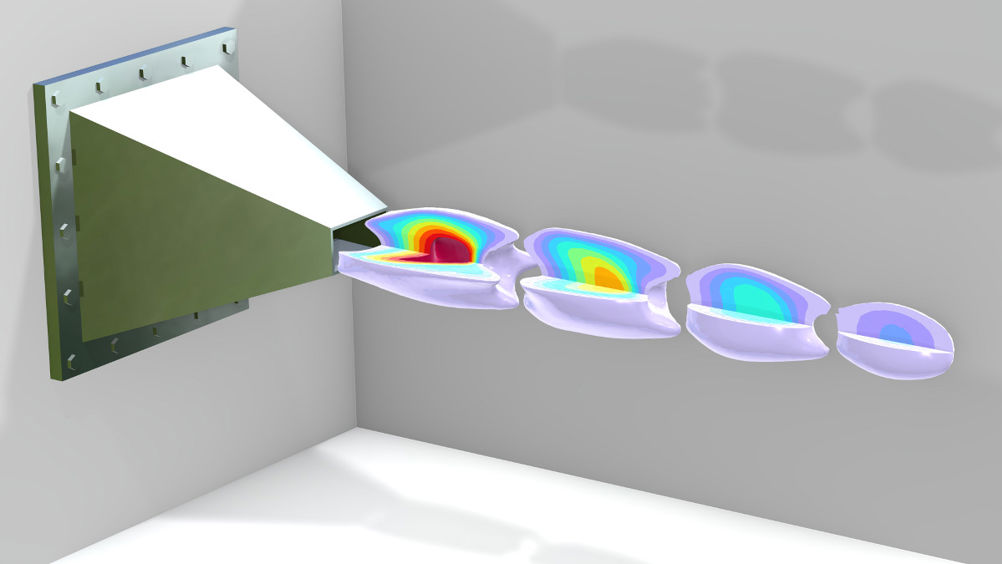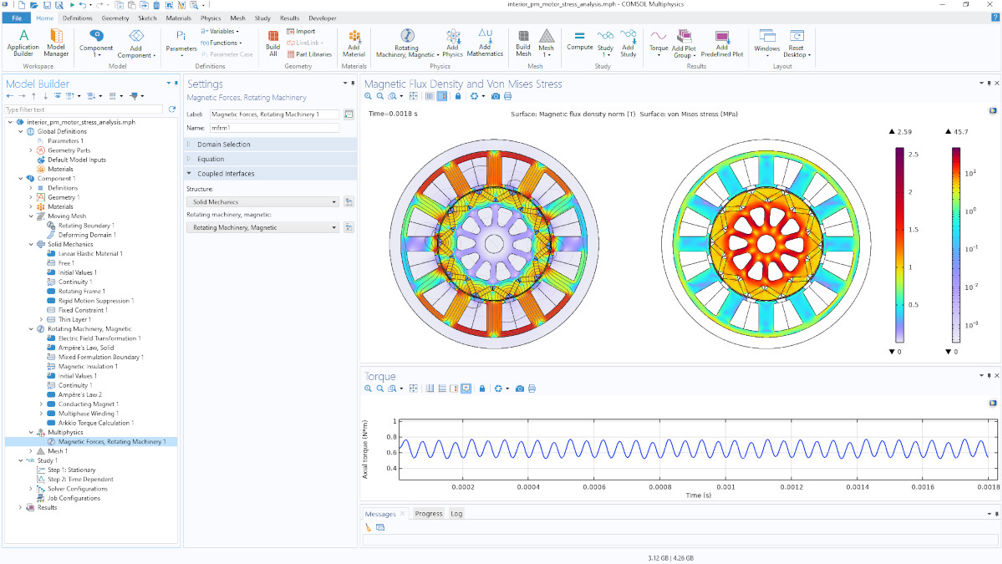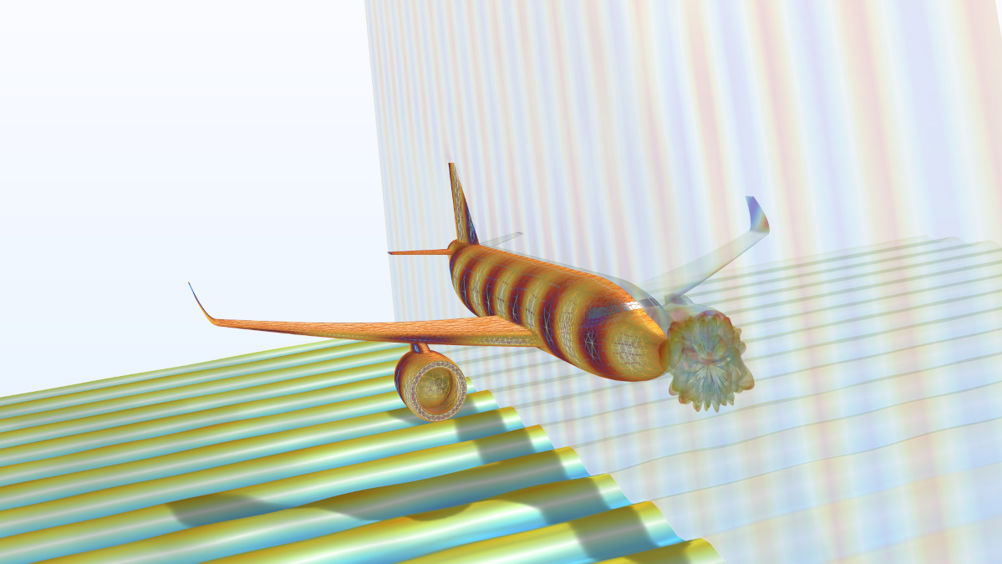It also features high-performance multiphysics solvers for the analysis of electric motors, up to 40% faster turbulent CFD simulations and an order of magnitude faster impulse response calculations for room and cabin acoustics. Additionally, it is now up to 7 times faster to perform boundary element analysis (BEM) for acoustics and electromagnetics when running on clusters.

Effective Simulation Apps and Digital Twins
Surrogate models deliver accurate simulation results much faster than the full-fledged finite element models that they approximate. When used in simulation apps, this leads to near-instantaneous results, providing app users with an improved interactive experience. In addition, surrogate models are useful for digital twins, where fast and frequent updates of simulation results are often necessary.
The latest software version also introduces the ability to make simulation apps with automated updates through timer events, which is especially useful when creating digital twins or IoT-connected simulation apps.
"Surrogate models significantly strengthen the app-building capabilities in COMSOL Multiphysics®, and open up new possibilities to our users," says Lars Langemyr, chief scientist at COMSOL. "They can now create effective digital twins and build interactive, computationally fast and accurate standalone apps."
High-Performance Multiphysics Simulations for Electric Motors
Version 6.2 expands the capabilities for efficient simulation of electric motors as well as for transformers and other electric machinery through a time periodic solver, available in the AC/DC Module. It also enables multiphysics motor analysis involving acoustics, structural mechanics, multibody dynamics and heat transfer, and makes it possible to run optimisation studies to find new motor designs.
"The new solving method makes an important class of electric motor simulations several orders of magnitude faster," says Durk de Vries, technical product manager for the AC/DC Module at COMSOL. "It allows for efficient analysis of multiphysics phenomena that were previously out of reach. This is pivotal for electric motor design optimisation, where a balance between structural, thermal and electromagnetic objectives is essential."

Enhanced Modelling Capabilities Across the Product Suite
In version 6.2, users will discover new modelling features across the board. Core offerings, like visualisation and meshing, are improved, and add-on products are expanded and updated. Version 6.2 also adds more than 100 new and updated example models, helping users enhance their modelling skills.
Some highlights from the broadened scope of physics modelling include:
- 7 turbulence models for high-Mach-number flow
- Realistic frequency-dependent materials for acoustics simulations in the time domain
- Modelling of hydrogen embrittlement in solids for fuel cells, electrolysers and corrosion
- Extended damage, fracture and contact modelling
- Easy-to-use specific absorption computations for RF tissue simulations
- Analysis of light propagation through liquid crystals
- Ability to use local weather data for temperature and pressure in simulations, based on a GPS location

The latest version of COMSOL Multiphysics® solidifies its standing as a comprehensive multiphysics simulation software, offering unmatched physics modelling and simulation capabilities within a single software environment. It also enhances its support for building, maintaining and compiling standalone simulation apps, thereby extending the use of simulation to individuals beyond the modelling and simulation community.
To get an in-depth look at the latest version, browse the full release highlights.
Alternatively, for an introduction to COMSOL Multiphysics® and a look at how the updates have enhanced its overall power, check out this blog post.










Radio wave weapon knocks out drone swarms
I hope they have assessed how easy it is to shield a drone against the attack. Hopefully the shielding would add too much weight.